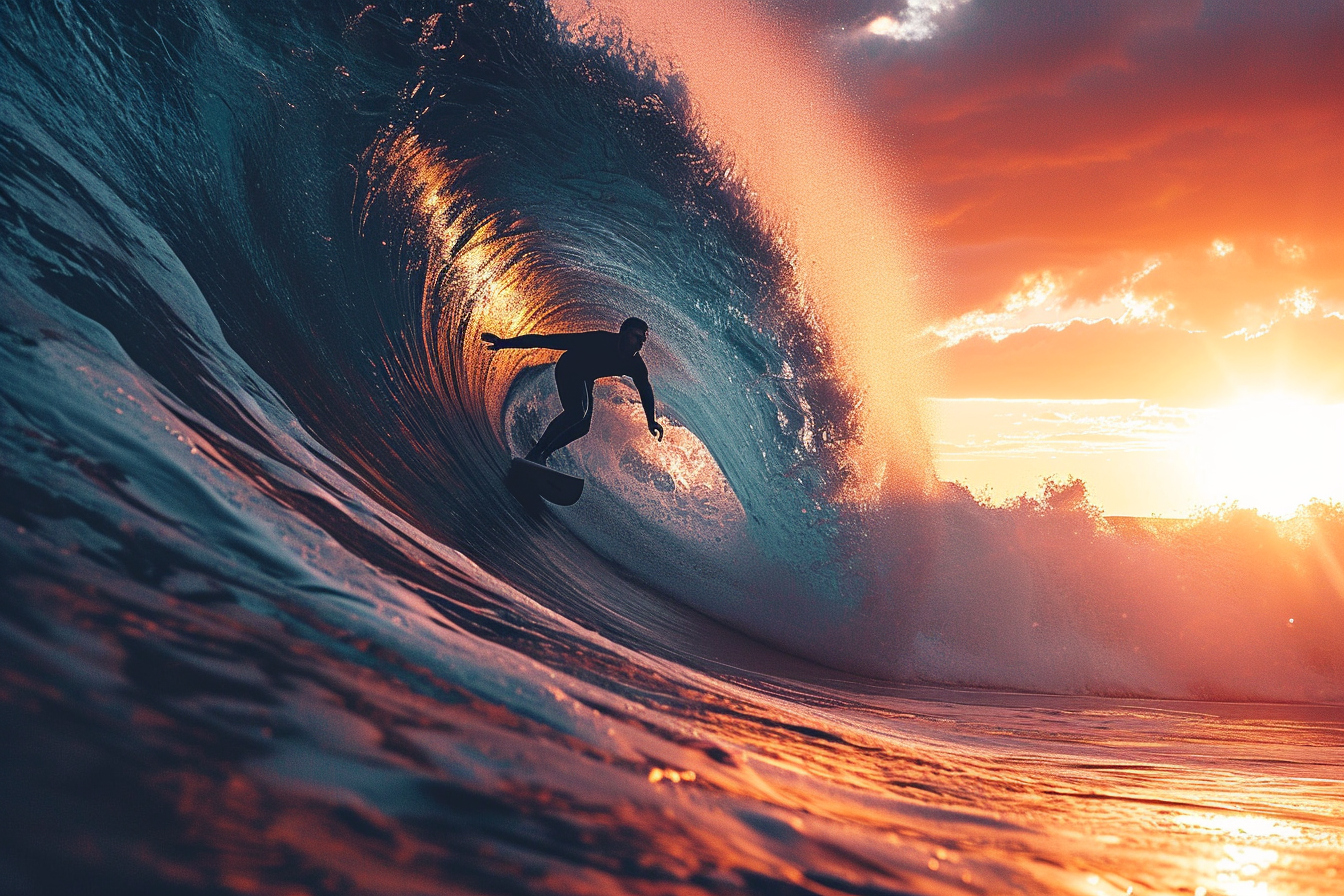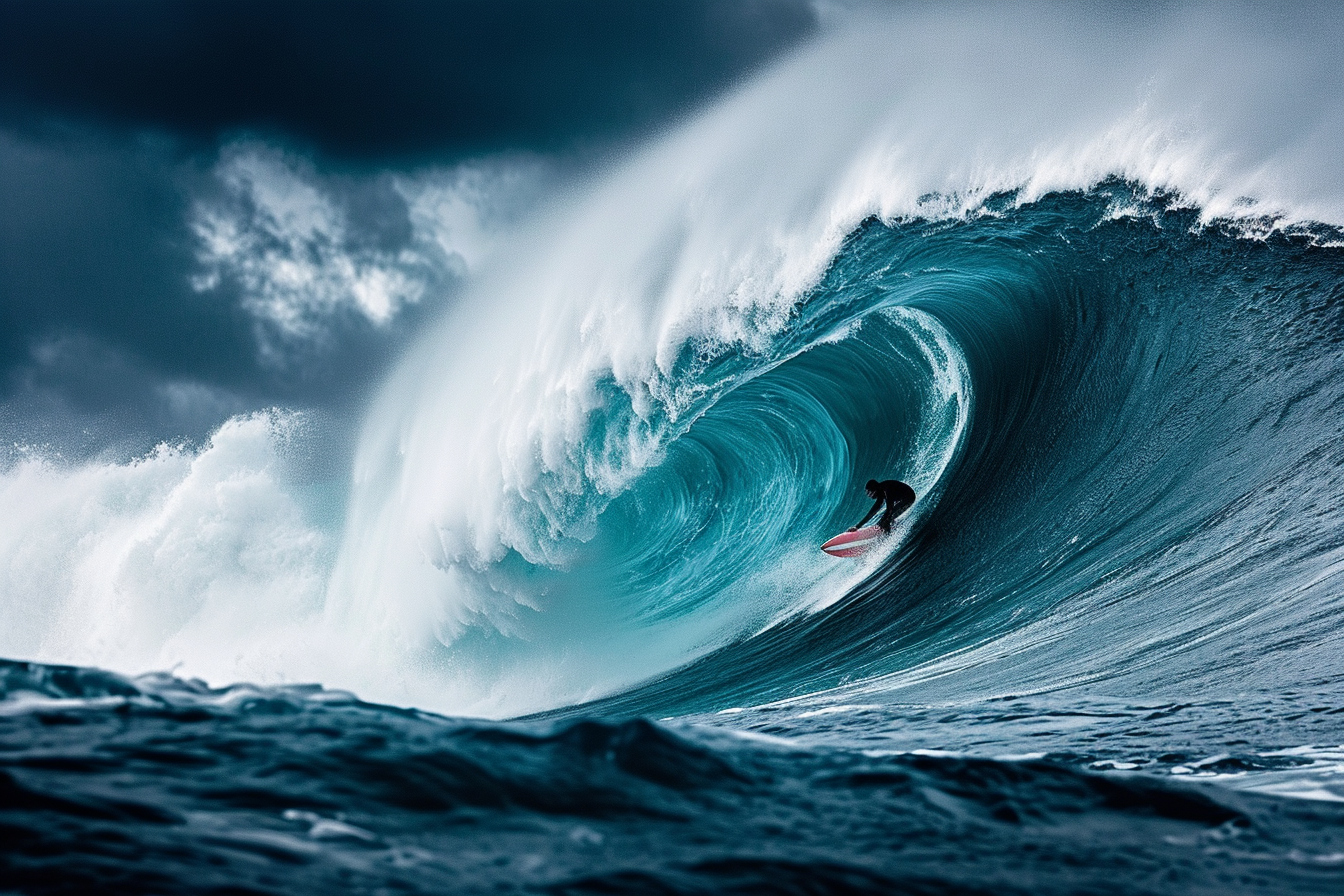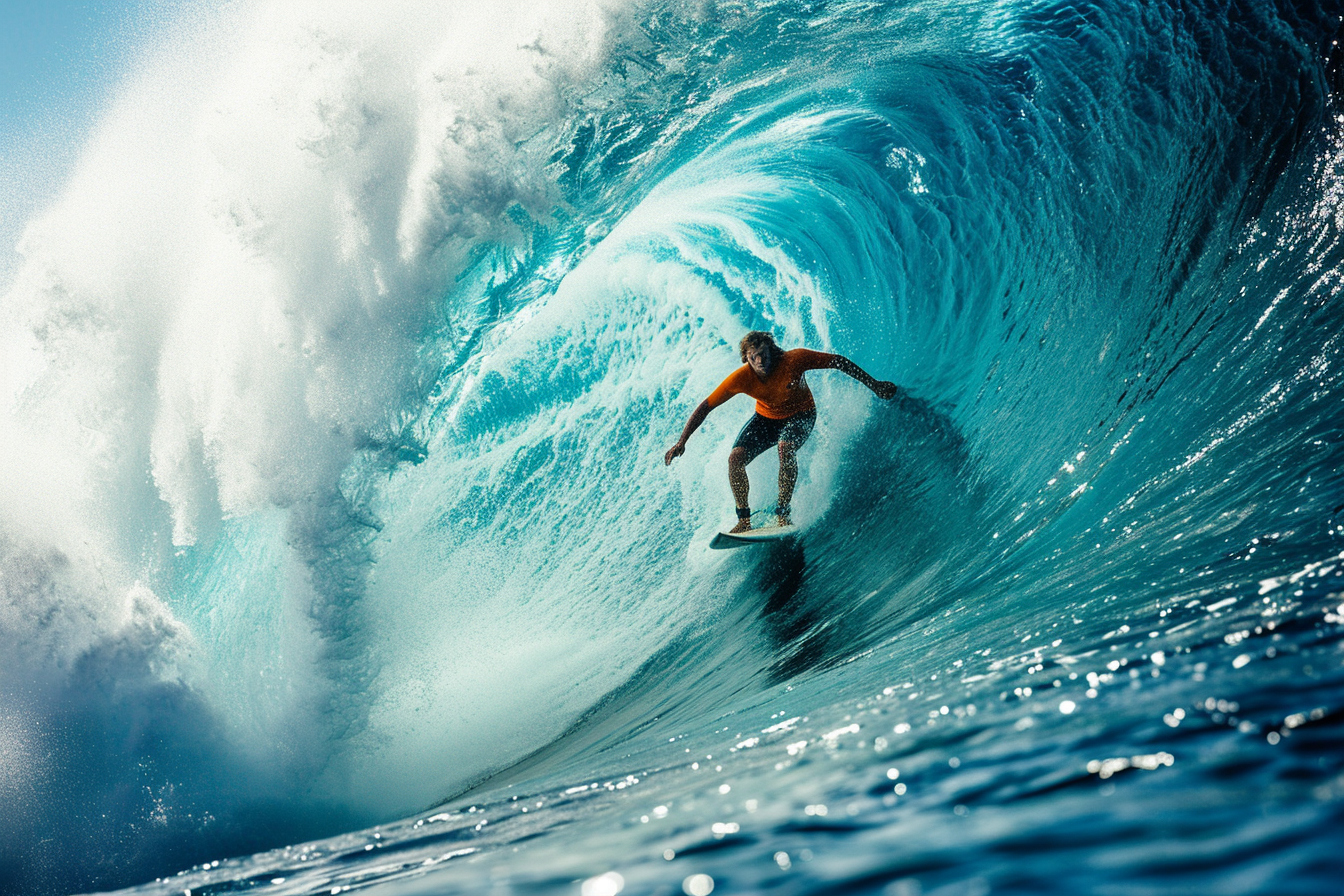Surfing is a sport that intertwices athleticism with the raw power and beauty of nature. When we venture into the realm of big wave surfing, it elevates this interplay to unprecedented heights. Big wave surfing is not just a surfing discipline but a distinct sphere where elite athletes confront the ocean’s mightiest waves. These titans of water can tower from 20 feet to over 100 feet, presenting a formidable challenge and an exhilarating experience for the brave surfers who dare to ride them.
In this discussion, we’ll delve into the critical information surrounding big wave surf competitions – from their history to the modern-day heroes who champion these thrilling contests.
History and evolution of big wave surfing
Big wave surfing’s roots can be traced back to the mid-20th century when pioneering surfers began pushing the boundaries of what was considered possible. Hawai’i, revered as the birthplace of surfing, also became the cradle for big wave surfing. Legendary names like Greg Noll, Eddie Aikau, and Laird Hamilton are synonymous with early big wave riding, turning it from a niche pursuit into a recognized sport.
Over the decades, advances in technology, surfboard design, and safety gear have allowed surfers to tackle increasingly perilous waves. The evolution has brought big wave surfing from a rite of passage to a competitive spectacle, drawing thrill-seekers eager to prove their prowess against nature’s most daunting conditions.
Big wave surf competitions: an overview
As big wave surfing gained traction, the need to validate human endurance and skill under such intense conditions led to the inception of big wave surf competitions. These events are held at some of the world’s most notorious surf spots, such as Mavericks in California, Nazaré in Portugal, and Pe’ahi (Jaws) in Hawai’i.
Key competitions and their formats
The World Surf League (WSL) Big Wave Awards recognize the surfers who brave the highest waves each season, with categories such as the Biggest Wave, Paddle Award, and Ride of the Year.
The Eddie Aikau Big Wave Invitational is a premier event held in Waimea Bay, Hawai’i, honoring the legendary lifeguard and surfer. It only runs when wave conditions are consistently over 20 feet in height – a tribute to Eddie’s mantra, "Eddie Would Go."
The Mavericks Challenge in Northern California is revered for its cold, shark-infested waters and monstrous waves, presenting a unique challenge to the competitors.
In most big wave competitions, a window period is set during the peak wave season. Within this time, event organizers wait for the perfect storm-generated swells to call the competition on, typically with only 48-hours notice.
Judging criteria
Judging in big wave surf competitions emphasizes wave size, surfer commitment, and the execution of the ride. Unlike regular surf contests where style and trick variety can score highly, in big wave events, it’s about the drop, the size of the wave, and the surfer’s ability to navigate critical sections.
The role of safety
In a sport where athletes confront the immense force of the ocean, safety is paramount. Jet ski assists, flotation devices, and spotters are standard safety measures employed during competitions to ensure surfers can be readily retrieved following a wipeout or in case of an emergency.
Preparations and training for big wave riders
Big wave surfers must undergo extensive training to prepare their bodies and minds. They must be adept swimmers, have excellent breath-hold ability, and maintain peak physical condition to withstand the incredible water pressure and turbulence. Additionally, big wave surfers often train in breath-hold recovery to improve their resilience in hold-down situations, which can occur if a surfer is pinned underwater by a series of waves.
Mental preparation
The psychological aspect is just as crucial as the physical. Surfers must harness a calm and focused demeanor to handle the stressful and sometimes life-threatening scenarios they face. Mental resilience training can include meditation, visualization, and practicing stress response techniques.
Surfboard design and technology
Advancements in surfboard design specifically cater to big wave surfing. Surfboards known as ‘guns’ or ‘rhino chasers’ are specially crafted for big wave conditions. They are longer, narrower, and have extra volume to increase paddle speed and stability on massive waves.
The growth and impact of technology in big wave surfing

Over the years, technology has significantly impacted big wave surfing. Innovations have not only made it safer but also more accessible.
Communication and forecasting tools
Surfers and event organizers employ sophisticated forecasting models and real-time communication tools to predict swells and ensure they are in the right place at the right time. Websites, mobile applications, and satellite data are utilized to monitor wave activity across the globe.
Water safety equipment
State-of-the-art water safety equipment, such as impact vests and quick-release harnesses, are becoming standard gear. These items can protect the surfer upon impact and provide buoyancy to facilitate a quicker return to the surface.
Wave-Finding and recording technologies
Modern jetskis, drones, and cameras are used to track surfers, locate surf breaks, and capture breathtaking footage for broadcasting and judging purposes. These technologies have revolutionized how big wave surfing is experienced by audiences worldwide.
Challenges and controversies in big wave competitions

Despite the allure and allure of big wave surfing, the sport is not without its challenges and controversies.
Environmental impact and sustainability
The increasing popularity of big wave surf spots has raised questions about environmental impact and sustainability. The local ecosystems and the welfare of marine life must be considered, and organizers and participants are encouraged to adopt eco-friendly practices to minimize their footprint.
Gender equality in the sport
Gender equality has been a contentious issue in big wave surfing. Historically, women have had fewer opportunities and recognition in the sport. However, the narrative is shifting. In the recent years, events like the Mavericks Challenge have included women’s heats, and female big wave surfers continue to break barriers and inspire a new generation.
The debate over tow-in versus paddle-in surfing
There is an ongoing debate within the big wave community regarding tow-in versus paddle-in surfing. Tow-in surfing, where the rider is towed into a wave by a jet ski, allows surfers to catch faster and larger waves than they could by paddling. Paddle-in purists argue that the essence of surfing is in the paddle, and they emphasize the skill and strength required to navigate big waves unassisted.
The future of big wave surfing
Big wave surfing is experiencing an exciting period of innovation and growth. With each passing season, surfers are pushing the limits further, spurred on by technological advancements and a growing global audience.
The role of training and preparation
As waves get bigger and the sport becomes more competitive, training and preparation become increasingly sophisticated. This includes not only physical and mental preparation but also collaborative efforts with scientists and engineers to develop better equipment and safety protocols.
The inclusion of emerging surf destinations
New big wave spots are being discovered and included in the competitive circuit, diversifying the range of challenges and environments surfers must face. These emerging destinations are introducing fresh dynamics and opportunities within the sport.
Public interest and media coverage
As big wave surfing garners more public interest, media coverage has expanded beyond niche surf channels. Mainstream sports broadcasters and documentarians are dedicating resources to capture these awe-inspiring events, bringing them into the living rooms of millions around the globe.
The icons of big wave surfing
Big wave legends like Laird Hamilton, Garrett McNamara, and Maya Gabeira have become household names, etching their legacy through extraordinary feats. Their dedication, athleticism, and sheer bravery continue to inspire aspirants and capture the imagination of fans worldwide. They are standards of excellence that unite a community in their collective pursuit of the ultimate ride.
With the big wave surf season fast approaching, the anticipation amongst enthusiasts is palpable. Each year offers the promise of historic swells and the potential for records to be shattered. As the surfers prepare and fans wait eagerly for the green light on competitions, the reverence for these mighty waves grows, alongside respect for the fearless athletes who engage them.
Big wave surfing remains a remarkable testament to human courage and innovation. It is a realm where the forces of nature and the spirit of adventure coalesce, creating a spectacle like no other. And while the future holds many uncertainties, one thing remains clear: the allure and challenge of big wave surfing are ceaseless, beckoning generations to interact with the ocean in its most formidable state.

Leave a Reply